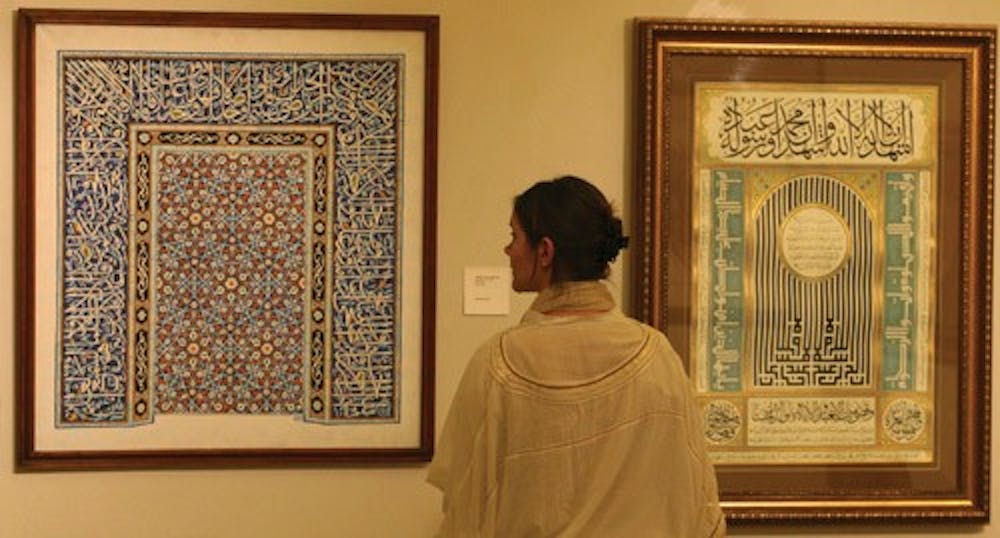ISLAMABAD, Pakistan – Pakistan’s painstakingly built National Art Gallery has overcome decades of political turbulence to become an eye-catching symbol of modernity and creativity in a nation more often associated with Islamic conservatism.\nThe four-story gallery opened to the public on Tuesday with an expansive exhibit of 600 works, from Persian-style miniature paintings with a modern twist to large-scale sculptures created specially for the museum.\nPakistan has long had a vibrant if small art scene, but the gallery took more than a quarter-century to go from conception to completion, due mainly to the changing priorities of a series of military leaders and short-lived elected governments.\n“It’s a wonderful feeling to have a home for all the work – a place to house the work of three generations of artists,” said Naiza Khan, a curator of the inaugural show and an artist whose female metal body armor is on display.\nFeaturing work from 126 Pakistani artists, some of the pieces in the “Moving Ahead” show have a distinctively South Asian or Islamic flavor: Arabic calligraphy, a painting with Bollywood actors, a throne made of white plastic ablution buckets that Muslims use to wash themselves before prayer.\nThe works are owned by the Pakistan National Council of the Arts or are on loan from private collectors.\nOne miniature painting by Waseem Ahmedtitled “Burqa” transforms a classical European odalisque into a classical Persian form. The reclining Venus is draped in a gauzy, transparent burqa, an all-covering Islamic veil, and gazes into a mirror that reflects apples, a Christian symbol of temptation.\nOne of the 132,000-square-foot gallery’s two grand halls holds several sculptures, including a creation by artist Khalil Chishtee. The piece, which uses white plastic bags, shows a life-size woman walking a tightrope, a man below turning his head up toward her, apparently held in position by a thread tugging his nose skyward. The tightrope is the braided hair of an elderly woman sitting in a wheelchair.\n“There’s a lot of stuff that you wouldn’t expect to be ... in a museum in Pakistan,” said Sana Raza, a 27-year-old consultant from Karachi who visited the gallery on opening day. She gestured toward sculptures criticizing society and the political system and said, “You would expect censorship ... more toned down stuff, but they’ve been pretty open about open expression.”\nThe Ministry of Culture promised there would be no censorship, said Salima Hashmi, one of the curators and an art historian. Curators were told to exercise their own judgment so as not to offend anyone. Showing figurative work or nudes “would be a problem in certain venues in Pakistan that are more conservative,” Hashmi said.\nThe museum’s interior space is white with warm accents, such as a brick-paved ramp leading to the mezzanine and a few areas with wood detailing on the ceiling. An auditorium and a rooftop courtyard are surrounded by delicate arches.\nThe exterior is made almost entirely of brick – a rare choice in an era of new museums around the world constructed with large concrete or stone slabs. “Brick has a humility. It has a scale that is so intimate,” said architect Naeem Pasha, who won the first competition in architect selection in 1981.\nA sentry of seven large black statues of burqa-clad figures, haunting and anonymous, stands outside the gallery entrance.\nSome spaces, such as the room displaying the calligraphy, are one-story high, while others are two stories high or taller, including one room that can be viewed from two little balconies on the second floor to give the visitor a different perspective.\nOn Tuesday, the room of miniatures was leaking a murky gray water through the ceiling, and many of the works had to be removed from the walls to protect them. Jamal Shah, executive director of the Pakistan National Council of the Arts, called the leaking “teething” problems that were being addressed.\nPasha won the first competition to choose an architect in 1981, but the project had many delays often because of the frequent changes of government. The foundation stone was laid in March 1996, but funding was diverted for a convention center, he said. When they finally got started, some officials wanted to demolish the unfinished structure, worrying it could be a hiding place for snipers targeting President Gen. Pervez Musharraf, whose office is nearby.\nThe $8.9 million gallery creates a rare cultural attraction for visitors to the grid-plan capital, which was only built in the 1960s. There are outdoor shopping centers, parks and the impressive Lok Virsa ethnographic museum, but few places to see art or theater.\nThe artwork at the National Gallery indicates how secular and liberal Pakistan’s growing middle-class has become, despite the conservative influence of the religious establishment.\n“As in many countries, you have audiences which will accept work which seems to be pushing the boundaries, and there will be other conservative audiences that will simply not accept it,” said Hashmi. “It’s anybody’s guess as to how this will proceed.”
Pakistani art museum opens with 600 works
New National Art Gallery features work from 126 native artists

Get stories like this in your inbox
Subscribe





